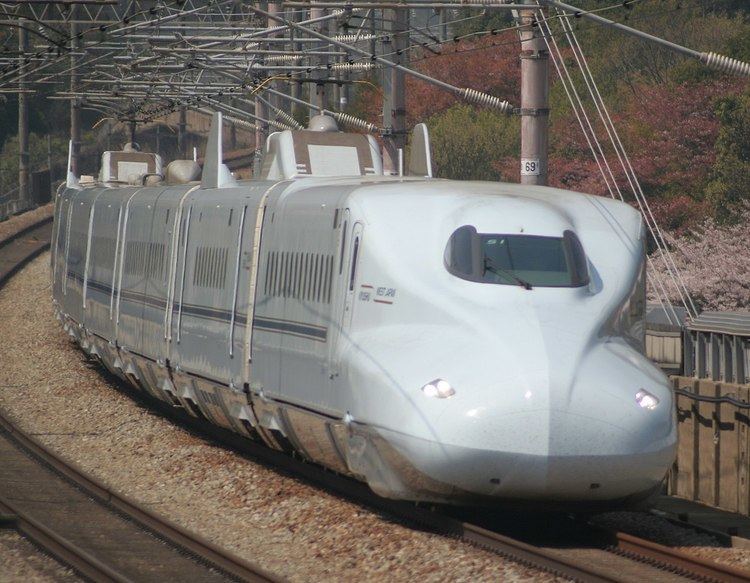Former operator(s) JNR | Start Shin-Osaka | |
 | ||
First service 1 October 1961 (Limited express)12 March 2011 (Shinkansen) | ||
The Mizuho (みずほ) is a limited-stop shinkansen service operated between Shin-Osaka and Kagoshima-Chuo in Japan since 12 March 2011, following the completion of the Kyushu Shinkansen. The name was formerly used for a limited express sleeping car service operated by JNR from 1961, which ran from Tokyo to Kumamoto, and was discontinued in December 1994. The name "mizuho (瑞穂)" literally means "abundant rice" in Japanese and "harvest" in the figurative sense. It was also an ancient name of Japan.
Contents
Train formation
Mizuho services are operated by 8-car JR West N700-7000 series and JR Kyushu N700-8000 series trainsets, with car 1 at the Kagoshima-Chuo end. All seats are no-smoking.
Limited express sleeping car service
The Mizuho was first introduced on 1 October 1961 as a seasonal limited express sleeper train service, which ran from Tokyo to Kumamoto in Kyushu, supplementing the three existing limited express services, Asakaze, Sakura, and Hayabusa, operating between Tokyo and Kyushu. From 1 October the following year, the service was upgraded from a "seasonal" service to become a daily service.
The typical formation at this time was as shown below, with car 1 at the Kumamoto end. Cars 8 to 13 ran only between Hakata and Tokyo.
From 1 June 1963, 20 series coaches were added to the formation, and the train divided and joined at Moji to serve Oita via the Nippo Main Line in addition to Kumamoto.
The schedule was as shown below.
The typical formation at this time was as shown below, with car 1 at the Kumamoto end. Cars 1 to 7 ran between Tokyo and Kumamoto, while cars 8 to 13 ran between Tokyo and Oita.
From October 1964, the Mizuho service once again became a direct service between Tokyo and Kumamoto following the introduction of the Fuji service running between Tokyo and Oita.
The typical formation at this time was as shown below, with car 1 at the Kumamoto end. Cars 8 to 14 ran between Tokyo and Hakata only.
From March 1972, new 14 series sleeping cars were introduced on Mizuho services, replacing the 20 series cars.
From June 1991, dining car facilities were discontinued, and the Mizuho service itself was discontinued from 3 December 1994.
Shinkansen
On 20 October 2010, it was formally announced by JR West and JR Kyushu that the Mizuho name would be used once again from 12 March 2011 for the new limited-stop shinkansen services operating between Shin-Osaka and Kagoshima-Chūō using new JR West and JR Kyushu N700-7000 and N700-8000 series 8-car trainsets with a fastest journey time of 3 hours 45 minutes, some 25 minutes faster than the Sakura services.
Trains stop at Shin-Kobe, Okayama, Hiroshima, Kokura, Hakata, and Kumamoto only, running at a maximum speed of 300 km/h (190 mph) on the Sanyo Shinkansen and 260 km/h (160 mph) on the Kyushu Shinkansen. The services are aimed primarily at the business market, with two return services in the morning and two in the evening.
Like the Nozomi service that operates on the Tokaido and Sanyo Shinkansen, the Mizuho is not valid for tourists traveling with a Japan Rail Pass.
